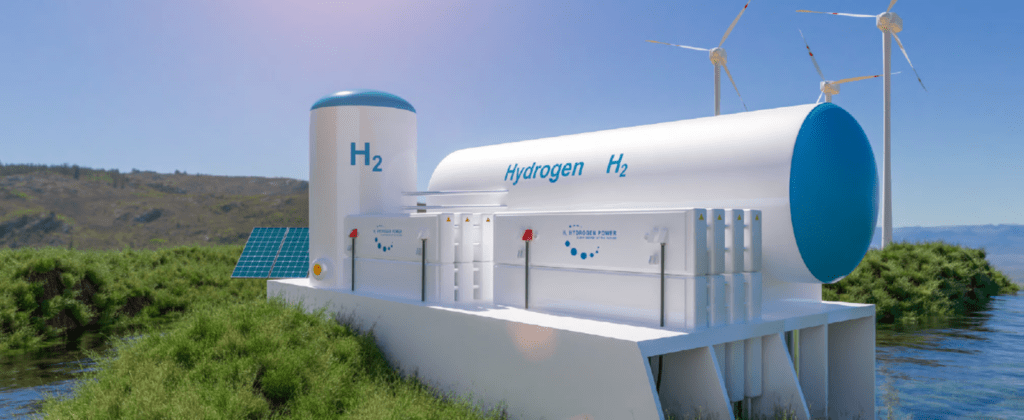1 March 2023
Hydrogen Electrolysis: How scale is impacting the insurance market
by Simon Marshall, Senior Risk Engineer, Integra Risk Services
September 2022 saw the world’s largest hydrogen electrolyser unit delivered to a site in Norway for validation and testing. As the hydrogen economy expands, we are likely to see ever-larger electrolyser units developed in a bid to win economies of scale and produce hydrogen more cost-efficiently. But, what does this mean for the insurance market, and what lessons can we learn from the past?

Electrolysis technologies
Until recently, the predominant electrolysis technology used for producing hydrogen was alkaline-based, and electrolytes contain up to 30% potassium hydroxide by weight. Generally, such units have a maximum stack size of approximately 6MW and their origins can be traced back to the early electrolysis innovations of 1789. But while the technology is well-proven, it also suffers from low energy efficiency and only performs at its best under constant conditions.
The second most common technology is Proton Exchange Membrane (PEM) electrolysis. This technique was invented in the early 1950s and developed in the mid 1960s. Typically, PEM units are produced to a maximum stack size of 2MW, although this has been increasing in recent years. The technology benefits from higher efficiencies, smaller size and the ability to operate effectively under changing loads. Looking forward, we can expect PEM electrolysis to be the preferred technology to couple to renewable electricity supplies for the production of green hydrogen.
Alongside PEM, technologies such as Solid Oxide and Anion Exchange Membrane electrolysis bring additional benefits for large-scale hydrogen production from renewable power sources. However, these are at much earlier stages of development and are unlikely to become mainstream until some time in the future.
Larger electrolysers
In the past, hydrogen production by electrolysis has not been widely adopted at scale because it is significantly more expensive than thermochemical methods. However, a recent focus on environmental issues has led to a reassessment of the process and a new emphasis on improving its efficiency through changes to equipment design and size.
Over the last three years, various large electrolysers based on both alkaline and PEM technologies have been brought to market. Units have grown in size, from 8MW to 10MW, and from 20MW to the latest 30MW unit in Norway. We can expect future demand to drive further expansion, with a 100MW PEM unit already underway in Egypt.
The challenge for the insurance market
As equipment develops to meet the needs of a growing hydrogen market, we will see new materials, designs and manufacturing techniques employed. Margins may be reduced, either to increase efficiencies or cut cost. Physical dimensions could alter significantly and operating characteristics differ dramatically to those experienced previously.
While equipment designers and manufacturers may profit generously from these developments, failure is always a risk. Manufacturers, developers and insurers must strike a balance to ensure that entrepreneurial, trade and insurable risks are shared appropriately.
Lessons of the past
The ongoing development of hydrogen electrolysis is not significantly different to the technological advances made
in other fields in the past, such as combustion gas turbine generator-based power plants and wind power.
Back in the late 1980s, combustion gas turbine-based power plants were an oddity, with small units of limited capacity used for peak lopping purposes only. But the 1990s saw numbers rise significantly as a greater demand for ‘clean’ power from gas and various manufacturers pushed the boundaries of materials choice, equipment sizing and cooling technologies. Units grew in size beyond the 20–40MW range and are now approaching 500MW. Today, equipment is configured in combined cycle with steam-raising plant and steam-driven generator sets, and combustion gas turbine-based technology forms one of the world’s major power generation methods. Whilst development in this field continues at pace, we should not forget that its technological advancement has thrown up a number of challenges over the years.
At the turn of the 21st century, typical wind turbine generator output was in the order of 500KW–1.0MW per unit. Since then, turbines have grown enormously, so that today there are several land-based units of 5.0MW or greater. Meanwhile, the industry’s move to offshore has resulted in turbines as large as 20MW and introduced a completely different set of risks. As wind power technology has up-scaled, manufacturers and operators have had to resolve numerous technical issues caused by factors such as larger blade size and heavier loadings.
Pushing the boundaries of technology
The hydrogen economy as a whole includes various elements of mature technology which have been used successfully in similar industries over the years. Gas compression, cooling and storage are all fairly well known from the LNG industry, and green power sources are also widely understood. Although the choice of materials used will be affected by the unique characteristics of the gas, we can find similarities across a number of other industrial processes. However, there are areas of hydrogen production where known technologies are being pushed to new boundaries.
The underwriting of developing technology risks is not new, but it does need to be managed accordingly. Looking to the past and focusing on what has happened in similar industries will help us shape a successful way forward for insurers of the growing hydrogen economy.